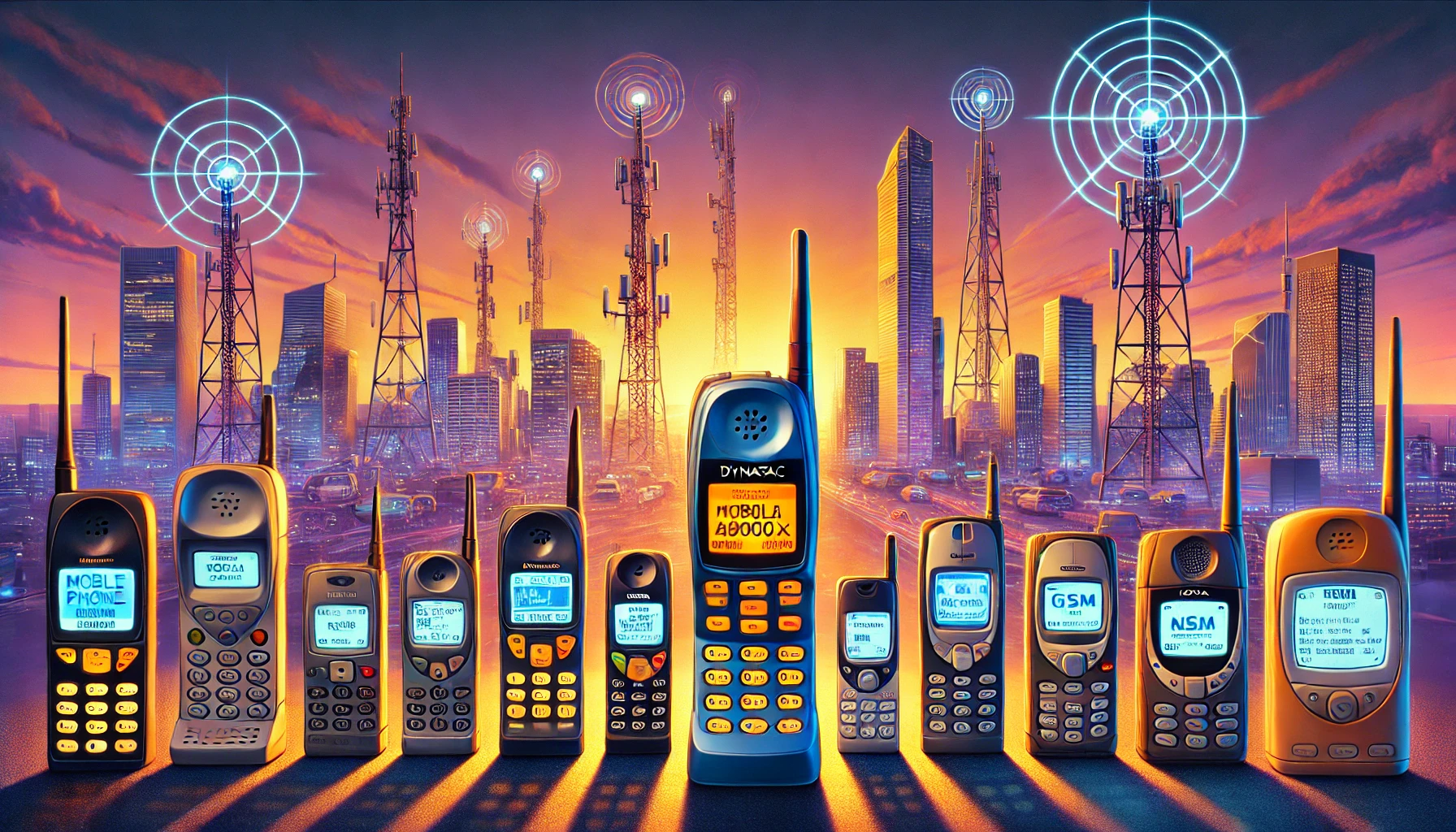The cellular phone has become an indispensable part of modern life. Whether for communication, entertainment, or work, mobile phones play a central role in how we interact with the world. But have you ever wondered who invented the cellular phone and how it evolved from the bulky to sleek, powerful smartphones we use today? This article delves into the fascinating history of the cellular phone, exploring the key innovators and breakthroughs that made mobile communication a reality. From the first mobile phone call in the 1970s to the global popularity of smartphones in the 21st century, we will uncover the story behind one of the most transformative technologies in human history.
Who Invented the Cellular Phone? The History Behind Mobile Phones
The cellular phone is a staple of modern life, fundamentally changing how we communicate, socialize, work, and entertain ourselves. But how did this technology come to be, and who invented the cellular phone? In this article, we’ll explore the origins of the mobile phone, from its early conception to the rise of today’s smartphones. Along the way, we’ll answer some critical questions: Who invented cell phones? When was the first cell phone invented? And how did cell phones become so popular?

A Brief Introduction to Cellular Phones
Before diving into the specifics of the inventors and milestones, it’s important to define a cellular phone. A cellular telephone refers to a mobile device that uses a network of radio cells (which are linked to a central system) to transmit and receive calls, messages, and data. This system is much more efficient and decentralized compared to older technologies like landlines, which rely on direct wired connections.
The invention of the cellular phone is attributed to several key individuals and technological advances. The journey to the mobile phone we know today is a fascinating one that spans decades.

The Early Foundations: The Birth of Mobile Communication
Before the cellular phone was even conceived, there were earlier attempts to create mobile communication devices. In fact, radio telephones were used as early as the 1920s for military and maritime communication. However, these early devices were bulky, expensive, and not practical for the general public.
The real foundation for the cellular phone was laid in the 1940s when researchers began developing the concept of cellular networks. The idea was that mobile communication could be made more efficient by splitting a geographic area into “cells” that could each handle a portion of the calls and transmissions. This approach would allow for multiple users to make calls in a particular area without overwhelming the system. But who made this breakthrough possible?
Who Invented the Cellular Phone?
The man credited with inventing the first cellular phone is Dr. Martin Cooper, a Motorola executive. On April 3, 1973, Cooper made history by placing the very first mobile phone call on a Motorola DynaTAC, a bulky, early version of the mobile phone. This momentous event took place in New York City, where Cooper called his rival at Bell Labs, Dr. Joel Engel, to brag about the success of his groundbreaking invention. The phone itself was enormous, weighing nearly 2.5 pounds, and had a talk time of just 30 minutes.
While Cooper’s invention is considered the birth of the cellular phone, it was not a simple task. He built upon research from earlier years, particularly the work of engineers at AT&T and Bell Labs. The idea of cellular networks itself was developed by Bell Labs’ researchers in the 1940s and 1950s. However, it was Cooper’s team at Motorola who took the leap of translating this concept into a working mobile device.

The First Commercial Cellular Phones
After Cooper’s historic phone call, it took several more years of development before the first commercially available cellular phone hit the market. In 1983, Motorola released the DynaTAC 8000X, the first mobile phone available for sale to the public. The DynaTAC 8000X was still quite large compared to today’s phones, standing 10 inches tall and weighing about 2.5 pounds, but it was revolutionary at the time.
The price of the DynaTAC 8000X was also a reflection of its advanced technology, retailing at approximately $3,995, which was a significant sum in the early 1980s. Despite the high cost, the phone was a commercial success, signaling the beginning of the cellular phone revolution.
The Evolution of the Cellular Phone: From Large Devices to Compact Models
In the years following the release of the DynaTAC 8000X, mobile phone technology rapidly advanced. The phones became smaller, lighter, and more affordable while cellular networks expanded across the globe. By the late 1980s and early 1990s, cellular phones were becoming increasingly common, although they were still considered a luxury item due to their high cost.
Throughout the 1990s, the mobile phone market exploded, with several companies introducing new models. Nokia, Motorola, and Ericsson were among the key players in the mobile phone industry during this time. Phones began to feature new technologies, including text messaging (SMS), better reception, and improved battery life.
In the mid-1990s, the introduction of the GSM (Global System for Mobile Communications) standard helped to solidify the widespread use of cellular phones around the world. By the end of the 1990s, mobile phones had become increasingly affordable and accessible to the general public, paving the way for the massive adoption of mobile technology in the 21st century.

When Did Cell Phones Become Popular?
Cell phones began to take off in the late 1990s and early 2000s truly. The key factors that led to their popularity included improved affordability, better network coverage, and the integration of additional features, such as cameras, games, and even rudimentary internet browsing.
One of the pivotal moments in the popularity of cell phones came in 2000, when Nokia launched the Nokia 3210, a highly successful and affordable mobile phone that appealed to a mass market. The success of the 3210 demonstrated that cell phones could be mainstreamed to a wide audience, not just the business elite.
However, the true turning point in the popularity of mobile phones came in 2007, when Apple launched the iPhone. The iPhone, with its sleek design, intuitive touchscreen interface, and access to mobile applications, revolutionized the cellular phone industry. It wasn’t just a phone; it was a device that combined a phone, a computer, a music player, and a camera in one compact, portable package.
The Rise of Smartphones and Mobile Applications
With the introduction of the iPhone, smartphones began to dominate the market. The rise of mobile applications further cemented the popularity of cellular phones. Today, millions of apps are available for download, providing users with a wide range of functions, from gaming and social networking to banking and health monitoring.
As technology continued to evolve, so did the capabilities of cellular phones. Advances in processing power, camera technology, and internet connectivity have made today’s smartphones incredibly powerful devices. 5G networks are now being deployed globally, allowing for faster download speeds and improved connectivity, opening up even more possibilities for the future of mobile communication.

The Global Impact of Cellular Phones
The widespread adoption of mobile phones has had a profound impact on society. Cellular phones have become essential tools for communication, business, education, and entertainment. In many parts of the world, mobile phones are used as the primary means of accessing the internet, particularly in developing countries where traditional broadband infrastructure is limited.
Furthermore, mobile phones have revolutionized industries such as retail, banking, and transportation, giving rise to new business models and services, including ride-sharing, mobile payments, and e-commerce.
The social impact of cellular phones is also significant. They have transformed how people interact with one another, enabling instant communication regardless of geographic location. Social media platforms, messaging apps, and video calling have all flourished on mobile devices, making the world more connected than ever before.
Judgment: The Lasting Legacy of the Cellular Phone
The invention of the cellular phone was a pivotal moment in human history. From its humble beginnings with Dr. Martin Cooper’s groundbreaking call in 1973 to the revolutionary iPhone in 2007, mobile phones have drastically altered the way we live, work, and communicate.
As technology continues to advance, we can only imagine what the future holds for the cellular phone. One thing is certain, though: the cellular phone will continue to play a crucial role in our daily lives, driving innovation and shaping the world around us.
Understanding the history behind this remarkable invention not only helps us appreciate how far we’ve come but also gives us a sense of where we might be headed. The cellular phone is more than just a communication tool—it’s a symbol of human ingenuity and the power of technology to change the world.



